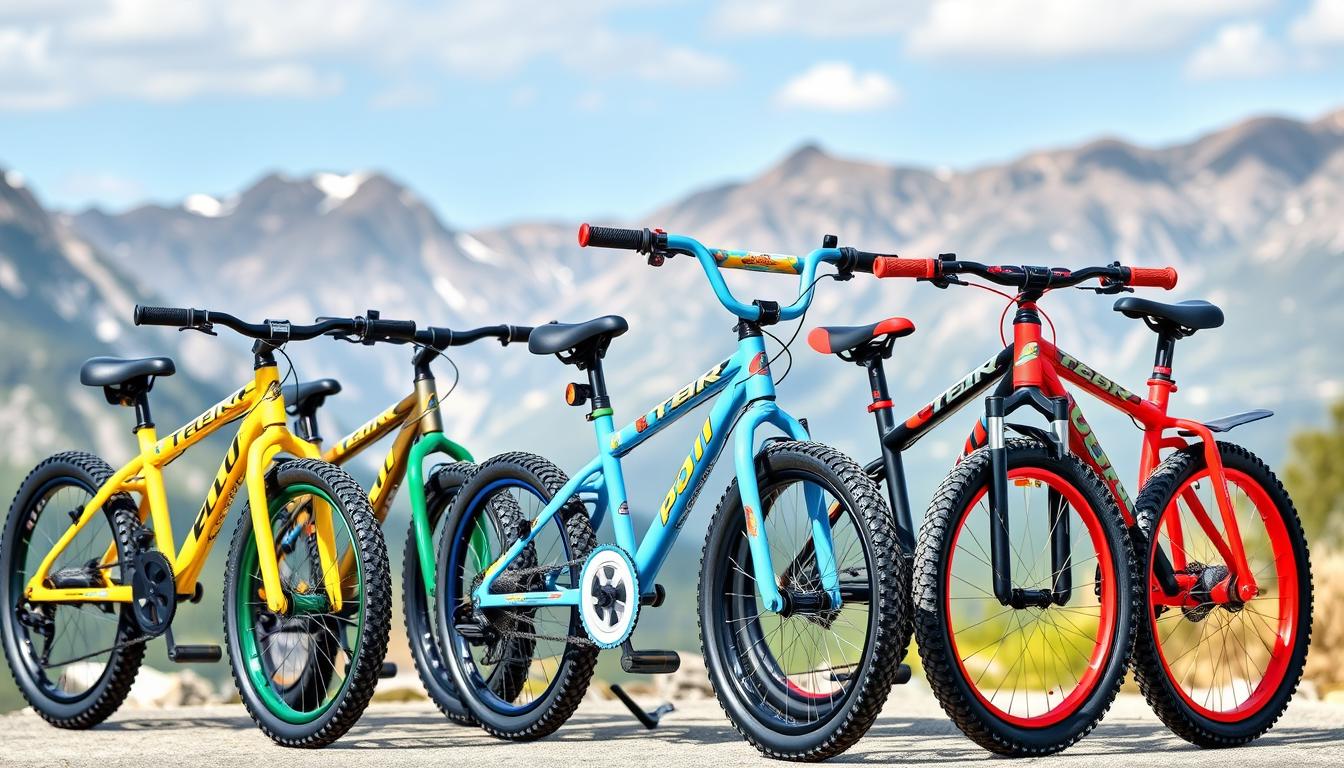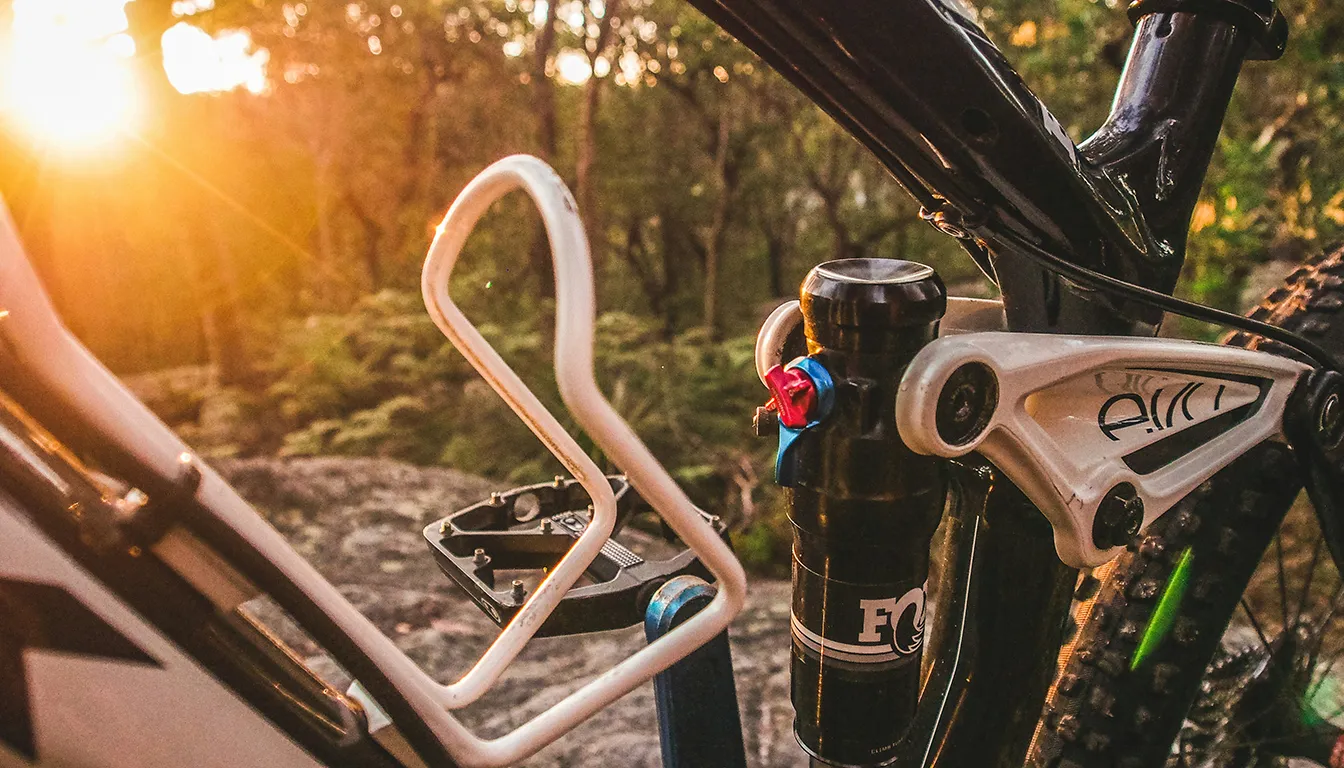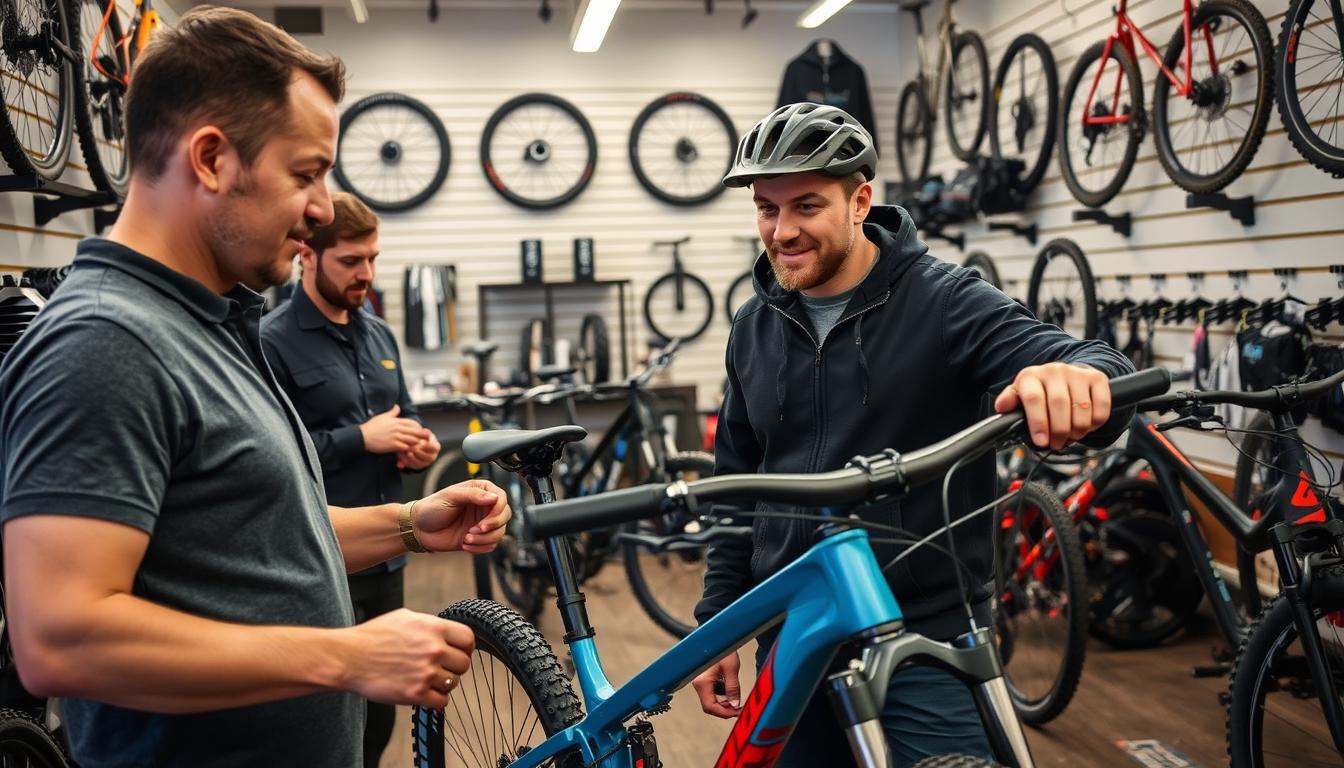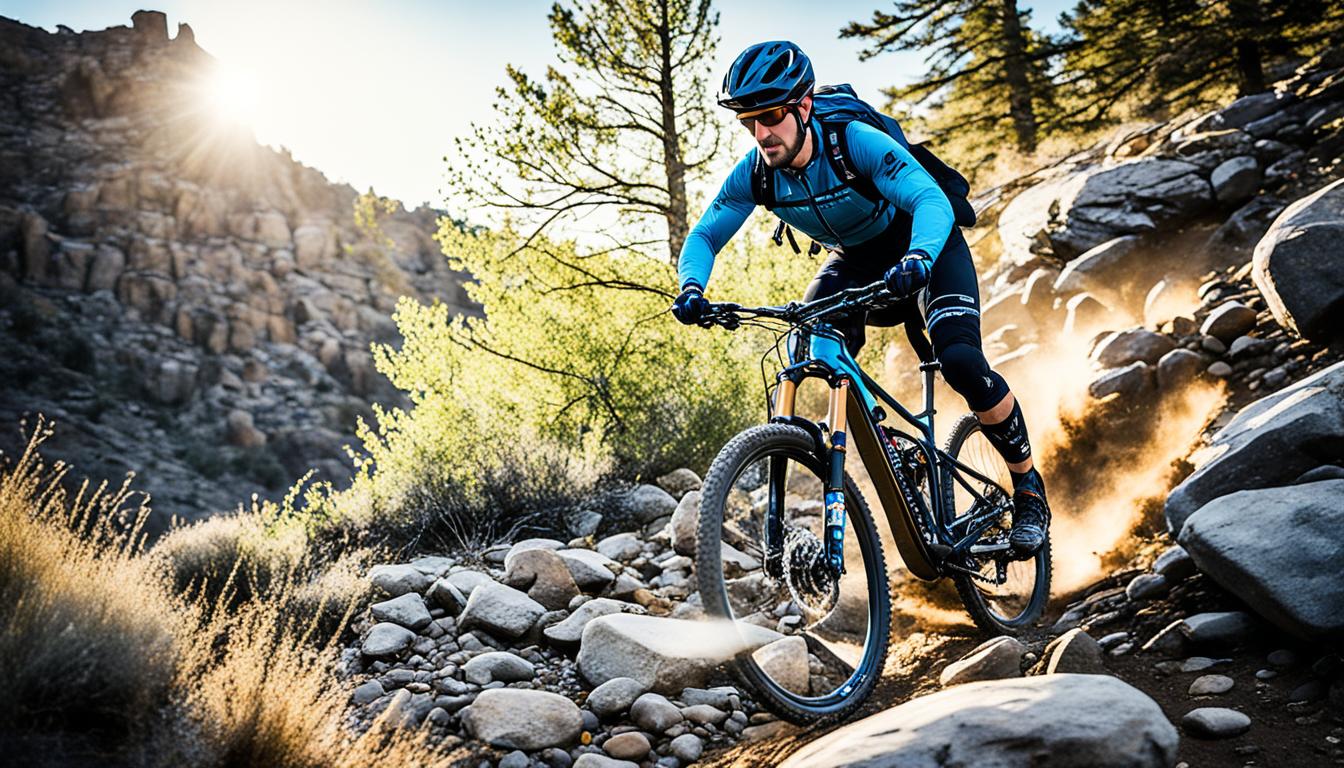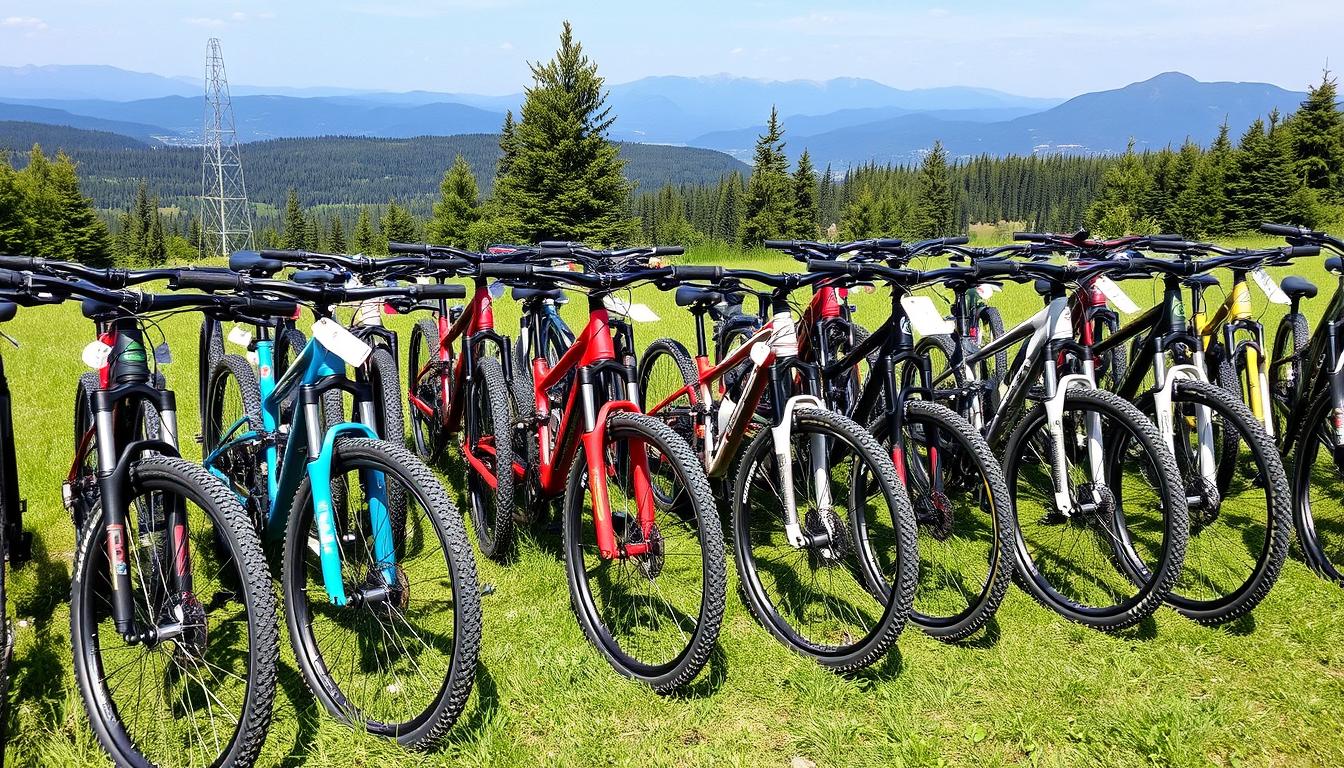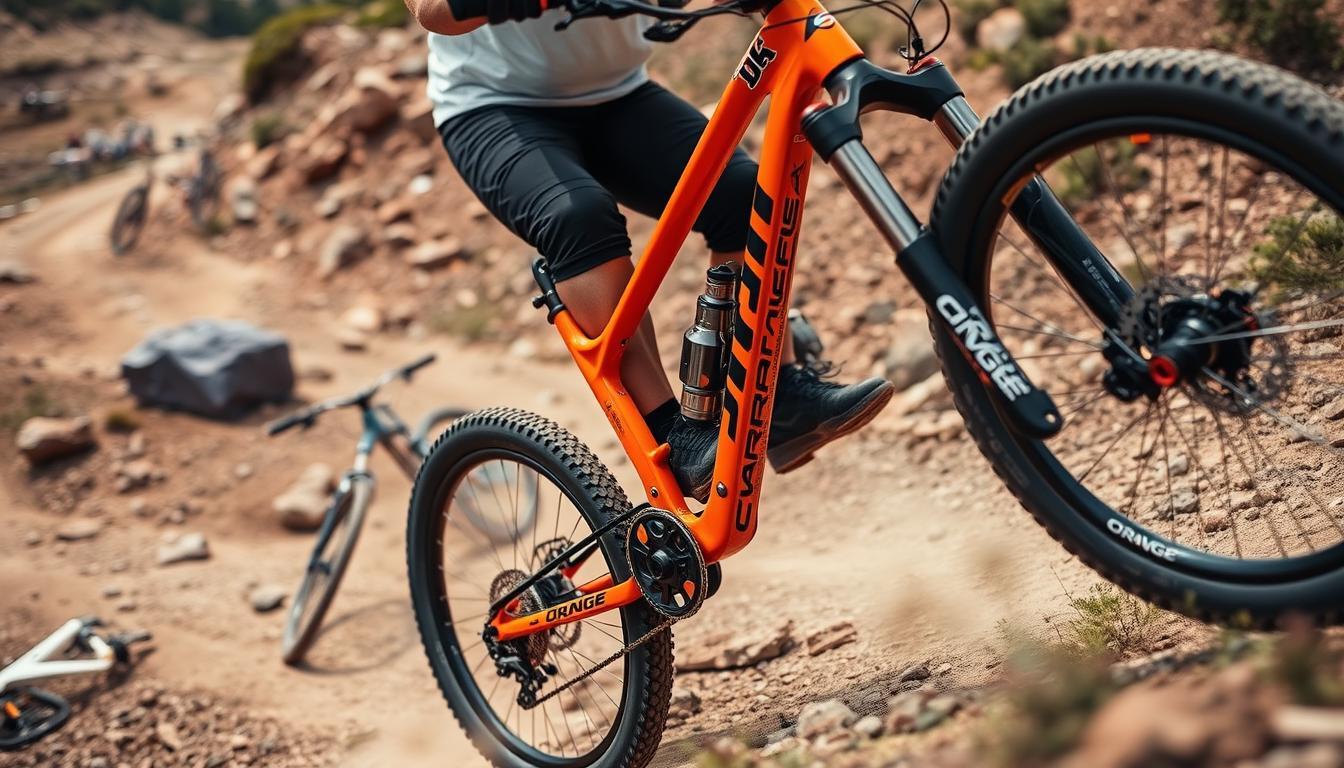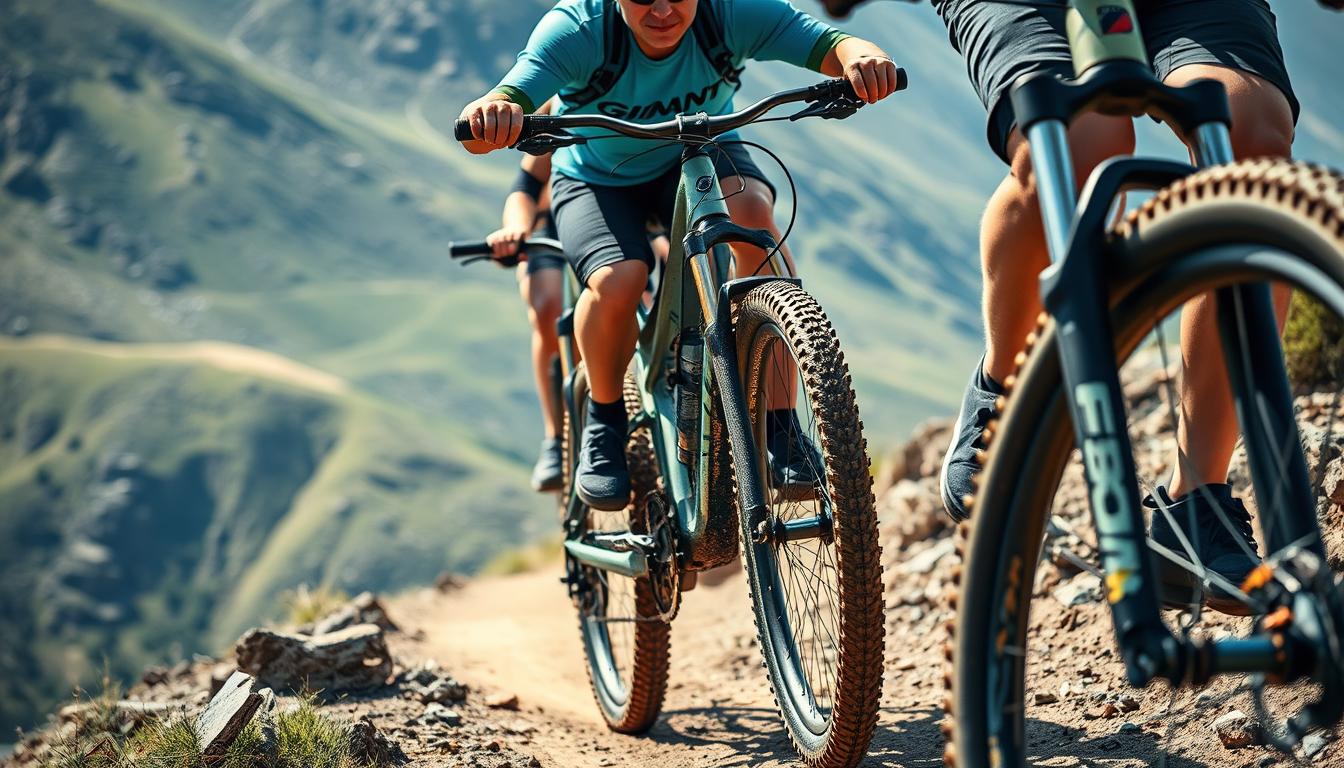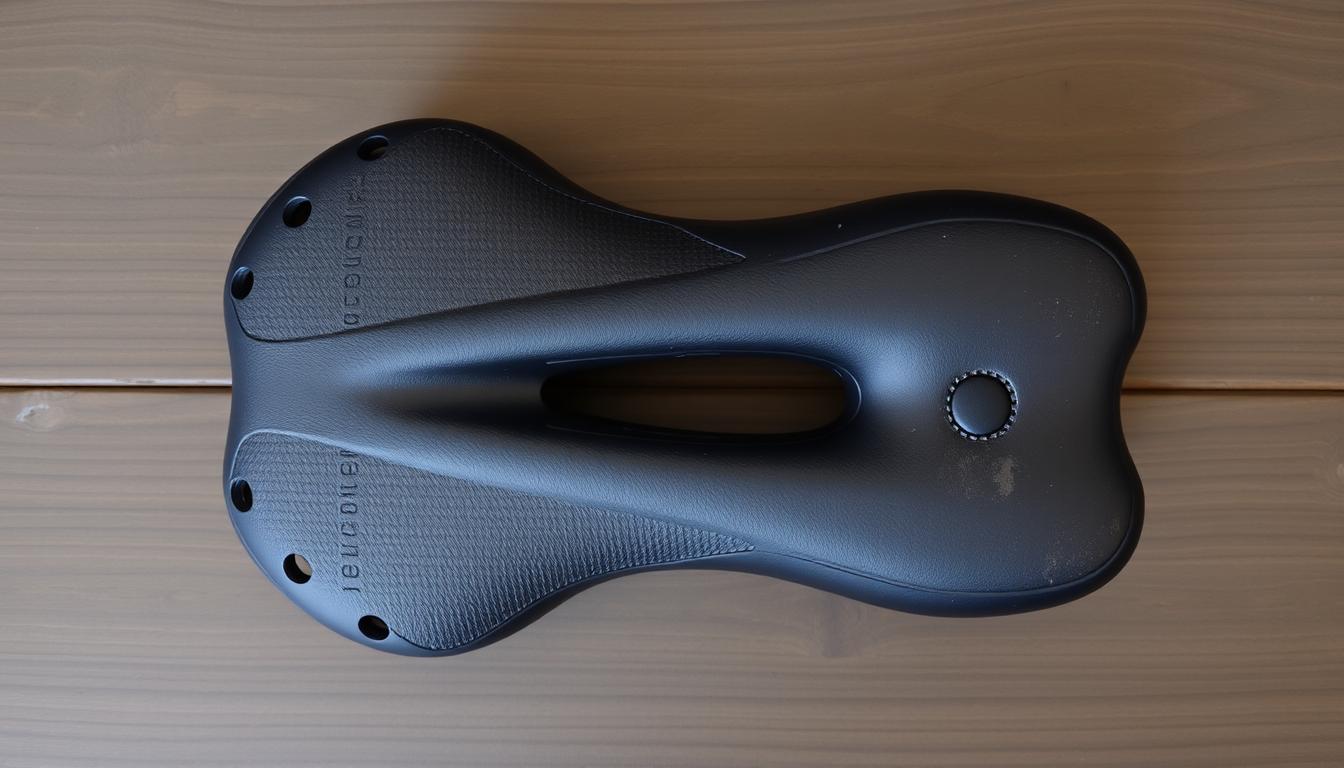Finding the right kids mountain bike means a lot for fun and safety. It’s not just the looks that matter. Features like quality, proper fit, and suitable for the terrain matter greatly. A good bike means less repair work, fewer injuries, and loads of fun outdoors.
For parents, the safety of kids cycling is top priority. A bike that’s light and fits well helps kids control it better. This boosts their confidence on different trails. Choosing the right bike can spark a lifelong love for cycling. For more advice, check out essential tips on selecting the perfect mountain bike for your kid.
Understanding the Importance of Quality Kids Mountain Bikes
Choosing the right bike for your child is crucial. Quality kids mountain bikes are made to suit young riders. They ensure safety and fun. A good bike improves their cycling experience. It also helps in your child’s growth, both physical and mental.
Why Quality Matters
Quality bikes are built well, with the right shape and parts for kids. Bikes that aren’t well made can make kids unhappy. They might not want to cycle. A quality bike makes outdoor activities fun. This makes investing in a good bike a smart choice.
Cost vs Value Perception
It’s true, quality kids mountain bikes can be expensive. But, when you compare, they offer more value than some toys. For example, spending £900 on a bike can give years of fun outside. This is better than things like video games that only last a short time. Also, good bikes can be sold later. Many parents get back a lot of what they spent.
Key Factors to Consider When Buying a Kids Mountain Bike
There are several key factors to weigh when buying a bike for kids. Quality is crucial, as it ensures the bike is enjoyable to ride. Plus, it represents a wise financial choice as your child’s biking abilities grow.
Long-term Investment
Picking a well-crafted kids mountain bike is a smart move for the future. As children’s skills improve, a strong bike can adapt. It shows its value by promoting countless outdoor adventures. This leads to a healthier lifestyle for your child.
Potential for Resale
High-quality bikes often keep their value over time. If your child outspaces their bike, selling it can return some of your money. Choose well-known, durable brands for a good chance at a rewarding resale. For top choices, see this guide.
Fit: The Most Crucial Element for Kids Mountain Bikes
Choosing the right mountain bike for kids requires attention to fit. An incorrect fit can make cycling less enjoyable and unsafe. It’s essential to consider stand-over height, seat height, and reach. Understanding these elements can ensure the bike fits your child perfectly.
Stand-Over Height
Stand-over height is vital for a child’s safety on the bike. Kids should easily straddle the bike with both feet flat on the ground. This helps them stop or get off the bike safely. The right stand-over height improves balance and makes cycling more enjoyable.
Seat Height and Reach
The seat height needs to be adjustable for proper leg movement. This way, kids can reach the ground comfortably while sitting. The bike’s handlebar reach should match the child’s riding posture. These adjustments help make cycling more comfortable and safe on any terrain.
Age vs Ability Considerations
Don’t pick a bike based just on your child’s age. It’s crucial to think about their skills and confidence level. This helps choose a bike that’s right for their size and ability level. The correct bike size makes cycling safe and helps kids fall in love with biking.
Weight and Its Impact on Performance
The weight of a bike greatly affects how well a child can ride and stay in control. This becomes even more important for kids’ bikes on different terrains.
Importance of Bike Weight
In cycling, bike weight considerations are key. A lighter bike means easier handling, key for young riders. Heavier bikes make climbing hills tougher. Kids on lighter bikes can more easily handle ups and downs and perform better.
Comparing a heavy steel bike to a light carbon or aluminium one, there’s up to 4 pounds difference. This can really improve performance, especially up steep hills where weight matters most.
Comparison with Rider’s Weight
Bikes should aim not to be more than half the rider’s weight. This helps with bike control and reduces tiredness. It boosts confidence too. For example, an extra 5 pounds on a bike makes a 5-kilometre hill take 30 seconds longer to climb. This shows the importance of the right bike-to-rider weight ratio.
The average weight for kids’ bikes is between 17 to 17.5 pounds. Choosing a lightweight bike is crucial for the best riding experience.
Braking Systems: Making the Right Choice
Choosing the right brakes for kids’ bikes is crucial for safety and fun. The main choices are between coaster brakes and hand brakes. Each has its benefits and things to think about, especially for kids.
Coaster Brakes vs Hand Brakes
Coaster brakes are often on bikes for younger kids. They’re easy to use because you just pedal backwards to stop. They’re required on bikes with seat heights under 25 inches by safety rules. This makes them common on smaller bikes. They’re also less costly to buy and look after. Their design helps protect them from water, which is good for safety.
But, coaster brakes are not without troubles. Kids may find back-pedalling hard, like when going up hills. Moving to hand brakes later can be tricky. Hand brakes give more control over stopping, which is key for going downhill or on wet roads. They allow adjusting the brake force. Plus, you can just replace the brake pads, not the whole system.
The Benefits of Disc Brakes
Disc brakes, like Shimano XT or SRAM Guide, are popular for kids’ bikes now. They offer strong and reliable stopping power. They work well on different grounds and help against hand tiredness on long rides. They’re made to be easy for kids to use.
Disc brakes also give kids more flexibility in how they pedal and brake. Shimano Deore M6100 Disc Brakes are a top pick for being affordable and easy to keep clean. Parents in biking forums often recommend brakes that are high-performing but also kid-friendly.
Suspension Options for Kids Mountain Bikes
Choosing the right suspension is key for kids’ biking comfort and joy. Different suspensions fit different skills and styles, letting young cyclists fully enjoy their trail rides.
Rigid Forks vs Front Suspension
Rigid bikes, like the woom OFF, don’t have moving parts. They’re light and simple to look after, great for beginners. They work best for calm rides on soft tracks with few bumps.
Front suspension bikes, for instance the woom OFF AIR, have a fork that lessens shocks. This kind benefits youngsters who love challenging paths and need comfort on uneven grounds. The woom OFF AIR’s light, air-sprung fork offers better control and ease than coil-sprung ones.
Considerations for Full Suspension Bikes
Full suspension bikes are top picks for tackling tricky trails. They promise more comfort and better performance but are heavier. Moving from rigid to front suspension, then to full suspension helps kids grow their biking skills. It’s crucial to focus on comfort when choosing a bike’s suspension for young riders.
Conclusion
Choosing the right mountain bike for your kid is important. It involves looking at quality, how well it fits, its weight, the brakes, and whether it has suspension. Making a good choice will keep your kid safe and happy on their bike rides. It will also help them love cycling more, be fit, and grow in many ways.
Make the most of your choice by understanding bike features. Stick to the best ways to pick a bike. Buying from well-known brands like Trek, Specialized, or IronHorse means your child can handle different grounds confidently.
Getting the right bike makes riding it a lot more fun and helps kids develop. It motivates them to discover and enjoy nature. This experience starts their journey of adventure and becoming strong. So, think about what they like and spend your money wisely, treasuring the fun times with your family.
FAQ
What is the importance of quality in kids mountain bikes?
Quality kids mountain bikes have special design. This design helps small riders have fun and stay safe. A good bike can prevent problems and make cycling a great experience.
How much should I expect to spend on a quality kids mountain bike?
Quality bikes for kids have different prices. But think about the long-term fun outdoors. Around £900 is a good start for many years of enjoyment. This is better value than many short-term activities.
What factors should I consider when selecting a mountain bike for my child?
Think about how the bike is made, how well it fits, its weight, and if it’s right for the trails. These things make biking safe and fun.
How does fit impact a child’s cycling experience?
A good fit means your child can sit right, touch the ground, and pedal comfortably. This makes biking both safe and fun.
What is the recommended bike weight for kids?
The bike should be no more than half your child’s weight. This helps with handling, reduces tiredness, and builds confidence.
Are coaster brakes suitable for young cyclists?
Coaster brakes are easy for starters but heavier. Starting with these, then moving to hand brakes aids skill growth. Having both is helpful.
What are the advantages of disc brakes on kids mountain bikes?
Disc brakes give better control and stop power, important on different trails. They help avoid hand tiredness on long rides. Designed for smaller hands, they are easy for kids to use.
When should I consider a full suspension bike for my child?
Full suspension is good for tough trails. But remember, they are heavier. Make sure it fits your child’s skills and comfort.
